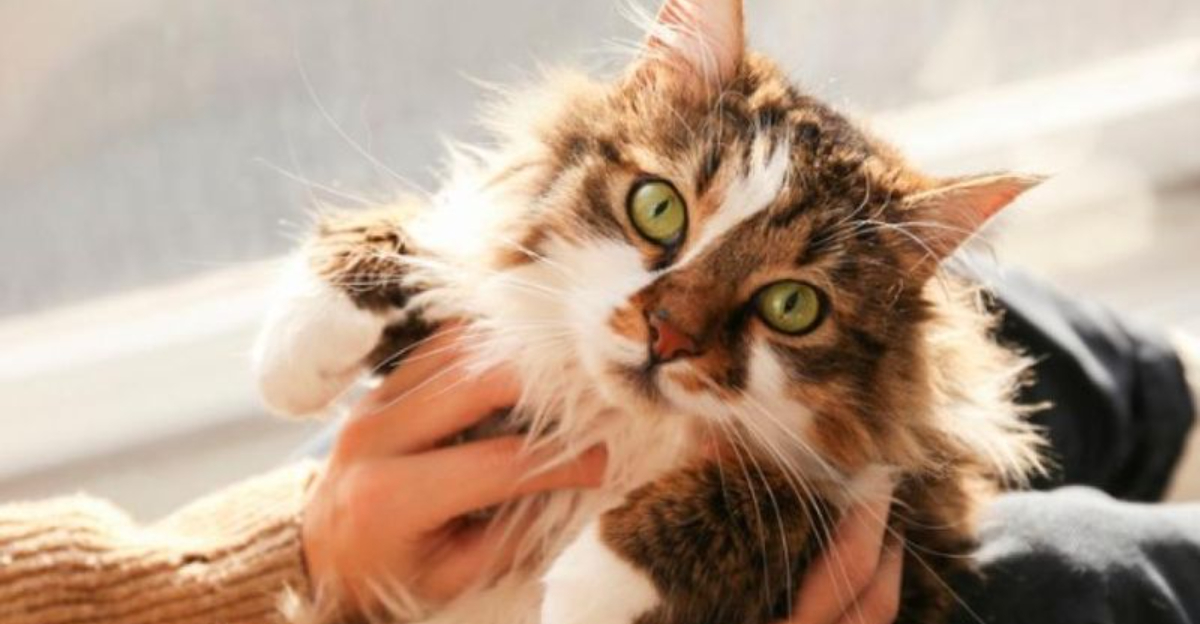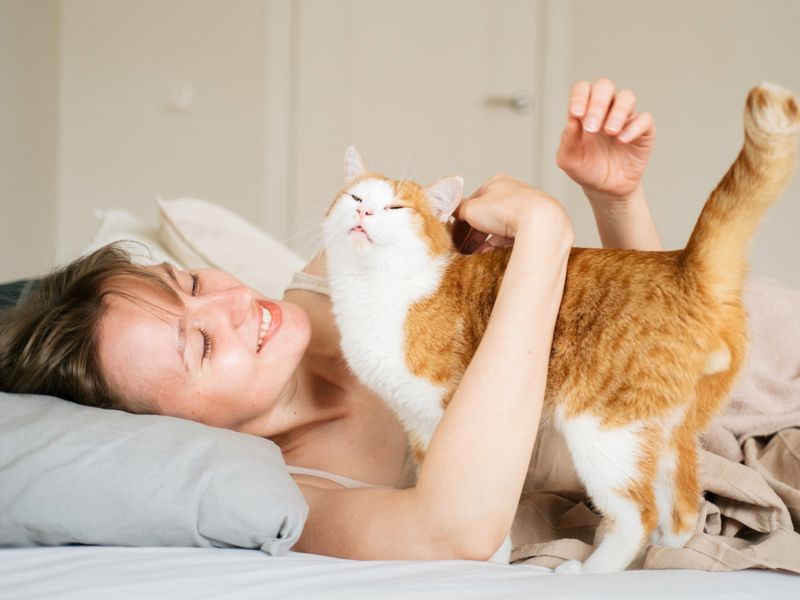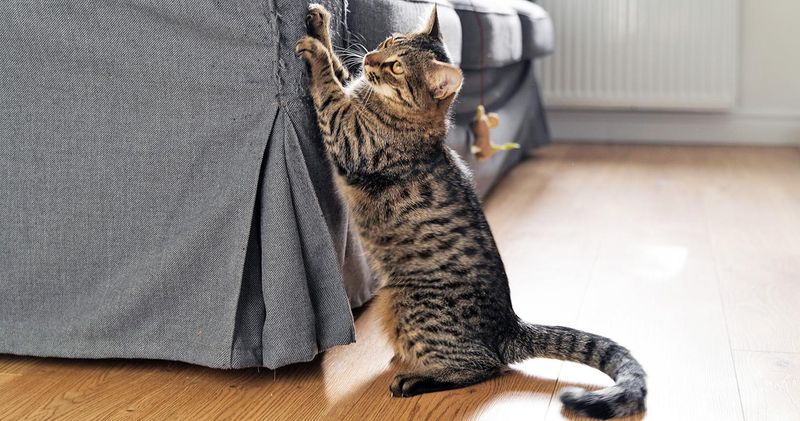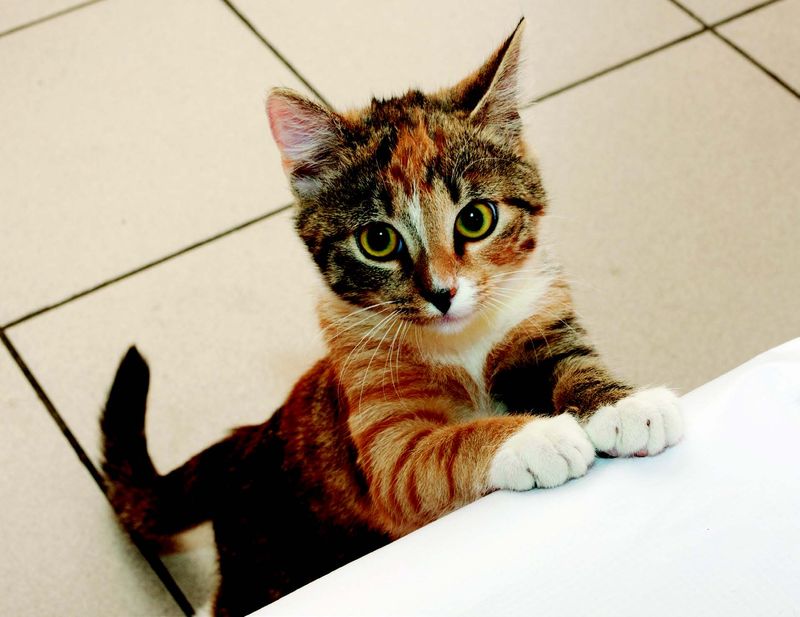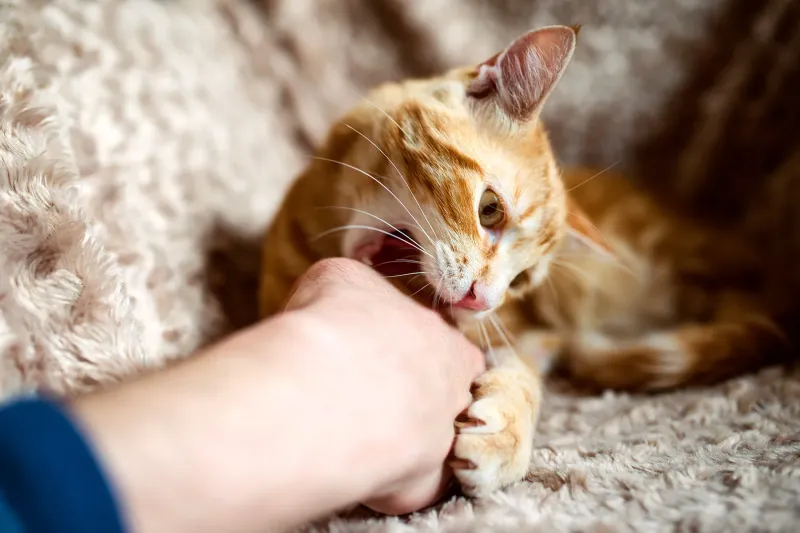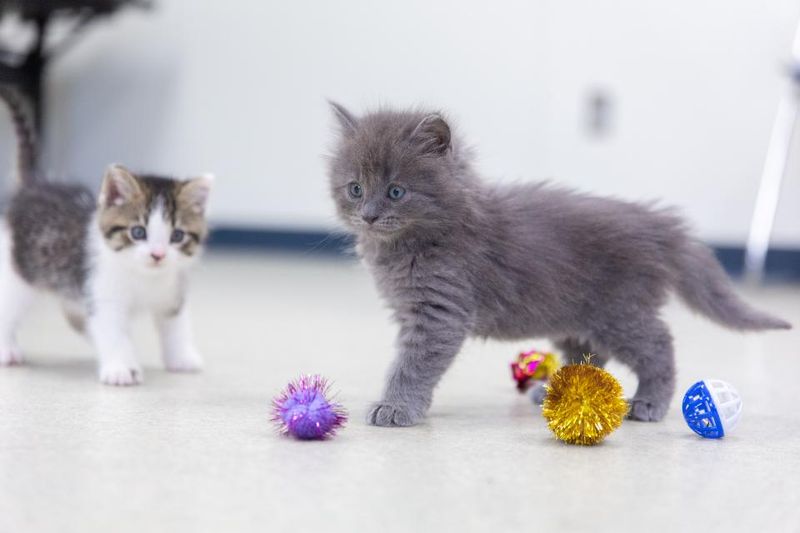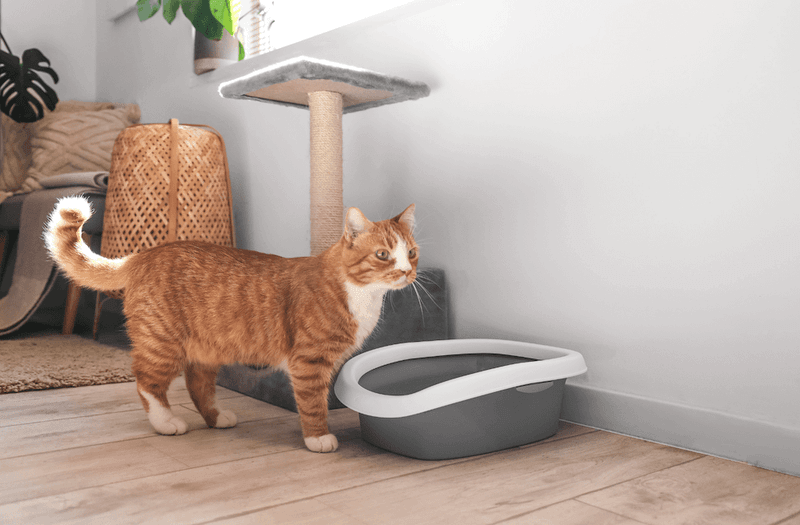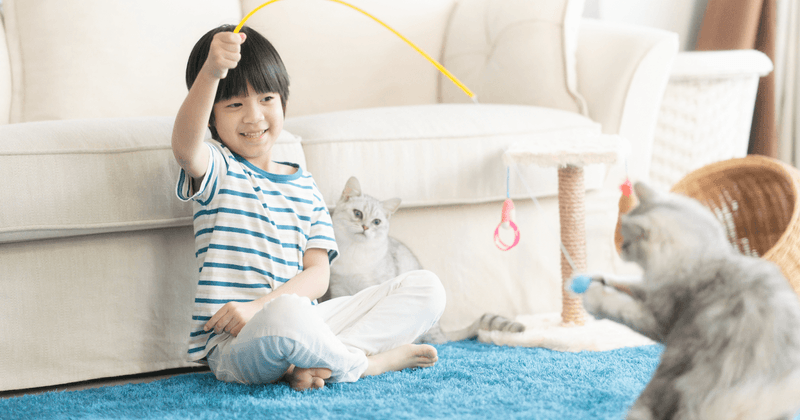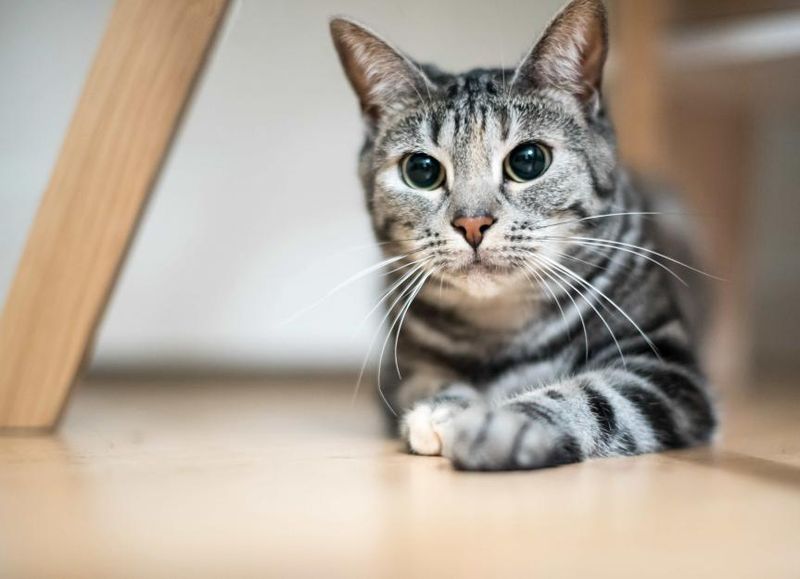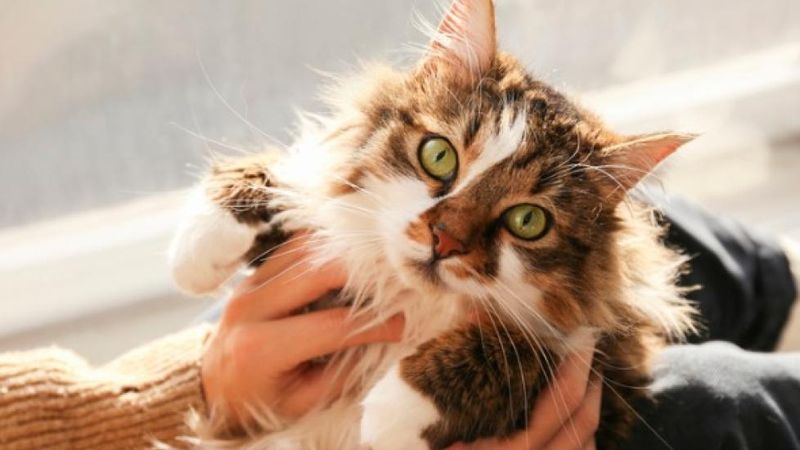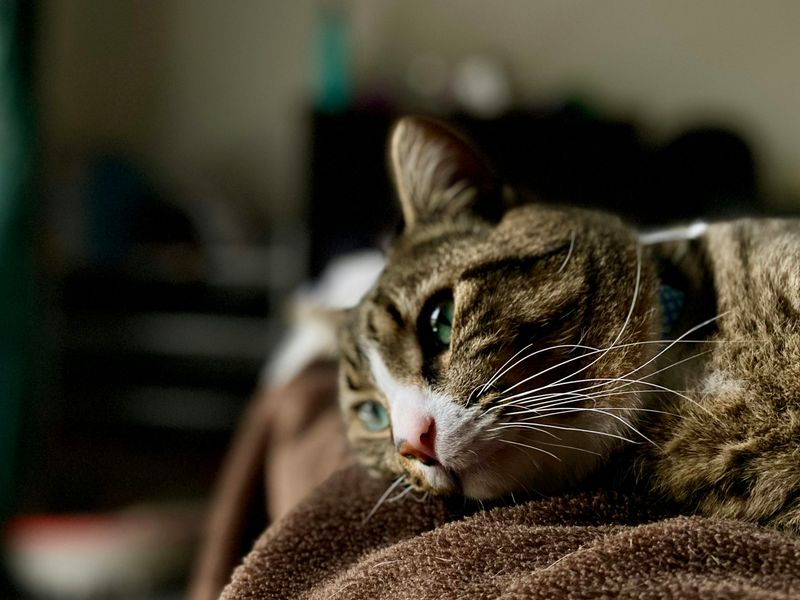📖 Table of Content:
- 1. Responding to Early Morning Wake-Up Calls
- 2. Punishing Normal Scratching Behavior
- 3. Giving Attention During Table Begging
- 4. Playing with Hands Instead of Toys
- 5. Skipping Regular Play Sessions
- 6. Inconsistent Litter Box Maintenance
- 7. Reinforcing Attention-Seeking Meows
- 8. Allowing Rough Play Between Cats and Children
- 9. Ignoring Signs of Overstimulation
- 10. Confusing Punishment With Training
- 11. Keeping an Unpredictable Household Schedule
- 12. Failing to Provide Vertical Territory
Cats sometimes pick up puzzling behaviors that seem to appear out of nowhere. Scratching furniture, meowing excessively, or pouncing at the wrong moments can feel both confusing and frustrating. Yet, these habits often have clear roots in past experiences and responses.
Many feline behaviors are unintentionally shaped by the way people react to them. A treat given at the wrong time, attention during a tantrum, or laughter at a mischievous act can all reinforce the very habits people hope to stop. Cats are quick learners and often repeat what gets them a reward.
Recognizing how certain actions may be fueling unwanted behavior is key to making lasting changes. Small adjustments in timing, consistency, and responses can lead to big improvements. With a better understanding of what motivates a cat’s actions, harmony becomes much easier to achieve.
1. Responding to Early Morning Wake-Up Calls
Your cat’s 5 AM pouncing routine isn’t random – it’s a learned behavior. When those persistent paws bat your face and you eventually get up to feed them, you’ve just taught your cat that persistence pays off. Breaking this cycle requires consistency. Try using an automatic feeder that dispenses food at a set time, removing you from the equation.
Some cat owners find success with a pre-bedtime play session that tires kitty out. Remember that any attention – even negative reactions like pushing them away – can reinforce the behavior since cats often prefer negative attention to no attention at all.
2. Punishing Normal Scratching Behavior
Scratching isn’t naughty – cats must maintain healthy claws, stretch muscles, and mark territory. Yelling or spraying water when your cat scratches furniture doesn’t teach alternatives – it creates fear and confusion. The solution lies in providing appropriate outlets.
Place multiple scratching posts near furniture your cat targets. Experiment with different textures – some cats prefer sisal rope while others like cardboard or carpet. Temporarily cover furniture corners with double-sided tape or aluminum foil while simultaneously making scratching posts more appealing with catnip or treats nearby.
3. Giving Attention During Table Begging
Food-focused felines quickly learn that persistence at the dinner table yields rewards. Even occasional table scraps create a powerful pattern that’s difficult to break. Your cat doesn’t understand why sometimes it works and sometimes it doesn’t. Consistency is key to changing this behavior. Create a firm household rule: no human food for cats, no exceptions.
During mealtimes, provide an alternative activity for your cat, like a puzzle feeder in another room. For particularly persistent cats, you might need to temporarily confine them during meals until the habit fades. Most cats adjust their expectations within a few weeks of consistent boundaries.
4. Playing with Hands Instead of Toys
Hand-play seems harmless with kittens, but creates problematic adults who don’t distinguish between play and aggression. Those cute nibbles become painful bites as your cat matures, not understanding why the same behavior is suddenly unacceptable. Redirect your cat to appropriate toys – wands, stuffed mice, or balls. Keep these toys accessible and rotate them regularly to maintain interest.
When your cat attempts to play with hands, immediately stop the interaction and walk away. Consistency matters most in this training. Everyone in the household must follow the same rules, or your cat will remain confused about boundaries. With time, your cat will learn that toys – not hands – are for pouncing and biting.
5. Skipping Regular Play Sessions
Cats need physical and mental stimulation – without it, they create their own entertainment in ways we don’t appreciate. That 3 AM zoomies session or knocked-over plant might be your cat’s response to pent-up energy. Adult cats need at least two dedicated 15-minute play sessions daily. Morning and evening play mimics their natural hunting patterns and helps prevent behavior problems.
Interactive toys that mimic prey movements are particularly effective. For busy owners, automated toys can help supplement play time. Rotating toys keeps experiences fresh and engaging. The effort pays off with fewer behavior issues and a stronger bond between you and your feline friend.
6. Inconsistent Litter Box Maintenance
Think of the litter box as your cat’s bathroom—and they’re picky tenants. If it’s too dirty, too crowded, or too public, they’ll look elsewhere. It’s not disobedience; it’s discomfort. A clean box, scooped daily and refreshed weekly, shows you understand their needs. Add an extra box beyond the number of cats, and place them somewhere peaceful.
Avoid scented litter, which many cats find overwhelming. If your previously well-trained cat starts having accidents, schedule a vet visit to rule out medical issues before assuming it’s behavioral. Urinary tract infections and other health problems often first appear as litter box avoidance.
7. Reinforcing Attention-Seeking Meows
Excessive meowing often develops because it works. When your cat learns that persistent vocalizing gets them food, attention, or access to forbidden areas, they’ll use this strategy repeatedly. The occasional reward is enough to maintain the behavior indefinitely.
Address this by only responding to quiet behavior. This requires patience initially, as the meowing may temporarily increase before improving. Provide attention when your cat is calm, creating positive associations with quieter behavior. For food-related meowing, automatic feeders can help break the connection between vocalizing and meals. Always rule out medical causes for sudden increases in vocalization, as cats may meow more when in pain.
8. Allowing Rough Play Between Cats and Children
Children and cats can form wonderful bonds, but unsupervised rough play teaches cats that humans are fair game for claws and teeth. Young children often unknowingly provoke defensive responses by grabbing tails or interrupting naps. Teach kids to respect feline body language – a swishing tail, flattened ears, or dilated pupils signal a cat who needs space.
Supervise all interactions between young children and cats, intervening before either becomes too excited. Create child-free zones where cats can retreat when overwhelmed. Elevated perches or dedicated rooms with baby gates allow cats to observe family life while feeling secure. These boundaries protect both your children and your cat’s emotional well-being.
9. Ignoring Signs of Overstimulation
What seems like a sudden bite often starts with overlooked signs of discomfort, as many cats experience petting-induced aggression when their threshold for touch is exceeded, and warning signs such as dilated pupils, shifting ear positions, or light tail flicks often go unnoticed, but they are clear signals a break is needed, and paying attention to a cat’s individual preferences leads to more respectful, rewarding interactions for both sides.
Some enjoy only brief petting sessions, while others have specific areas they dislike being touched. Most cats prefer being stroked on the head and cheeks rather than the back or stomach. End petting sessions before your cat becomes overstimulated, ideally while they’re still enjoying the interaction. This builds trust and prevents the frustration that leads to aggressive responses.
10. Confusing Punishment With Training
Punishing a cat is like trying to teach with thunder—loud, scary, and totally unclear. Spray bottles and stern voices may stop a behavior in the moment, but they don’t teach your cat what to do instead. The real magic happens when you redirect the behavior, like guiding them from a countertop to a cat tree, and then offering a treat or praise when they get it right.
Clicker training works particularly well with cats, creating clear communication. Address environmental factors that might contribute to problem behaviors. Boredom, stress, or territorial insecurity often underlie acting out. Providing enrichment through climbing spaces, hiding spots, and interactive toys prevents many behavior issues before they start.
11. Keeping an Unpredictable Household Schedule
Predictability is key to a cat’s well-being, and inconsistent routines with feeding, play, or household activities can prompt stress-driven behaviors such as inappropriate urination, excessive licking, or aggression. When cats cannot anticipate what’s coming next, their anxiety increases. Maintaining regular meal times, play periods, and sleep schedules gives cats the stability they need to feel safe and comfortable.
Even on weekends, try to maintain similar timing to weekdays. For unavoidable schedule changes, gradually transition to new routines rather than making abrupt shifts. Automatic feeders can help maintain consistency when your schedule varies. Pheromone diffusers like Feliway may help ease anxiety during necessary disruptions like moving, travel, or home renovations.
12. Failing to Provide Vertical Territory
Cats are natural climbers who need vertical space to feel secure. Without appropriate climbing options, they may scale curtains, bookshelves, or kitchen counters. This isn’t defiance – it’s fulfilling an instinctual need for elevated vantage points. Cat trees, wall shelves, or window perches provide sanctioned climbing opportunities.
Strategic placement near windows entertains bird and squirrel watching. Multiple height options allow cats to adjust their position based on comfort and security needs. For multi-cat households, vertical space is especially important as it allows cats to establish hierarchy without conflict. Each cat can claim territory at different heights, reducing tension and resource guarding on the ground level.
